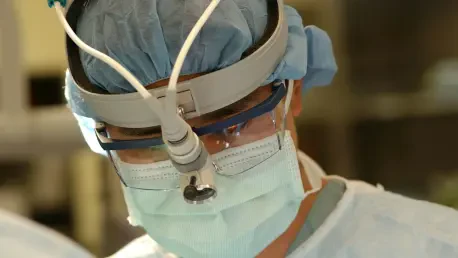The medical community has long grappled with balancing effective treatment and quality of life for prostate cancer patients, especially those diagnosed with low to intermediate risk levels. Amid various advancements, Magnetic Resonance Imaging (MRI) has emerged as a pivotal innovation, promising a paradigm shift in prostate cancer management. As one of the most prevalent non-skin cancers among American men, prostate cancer frequently involves cases classified as low-risk, characterized by slow-growing cells that often never present symptoms during a patient’s lifetime. Despite these classifications, patients’ anxiety over disease progression has traditionally driven immediate treatments, often resulting in significant side effects such as incontinence and sexual dysfunction. While newer technological practices continue to evolve, the focus remains on optimizing patient monitoring processes to reduce unnecessary invasive treatments.
MRI and Active Surveillance
Incorporating MRI into active surveillance strategies has transformed how clinicians approach prostate cancer management, providing the necessary visual insights to better predict disease behavior. Active surveillance involves a systematic monitoring process that avoids the automatic initiation of treatment unless the cancer shows signs of advancement. The high precision of MRI allows physicians to distinguish between aggressive tumors and those that pose minimal risk. Historically, routine follow-up biopsies were key to understanding progression; however, MRI-guided biopsies now offer a more accurate initial assessment. These technological advancements simplify the monitoring process by potentially replacing invasive biopsy procedures, enabling more reliable and safe patient evaluations. As MRI becomes integral to these surveillance programs, its impact on reducing patient anxiety and enhancing confidence cannot be overstated.
Focal Therapy and Patient Quality of Life
The integration of focal therapy, a minimally invasive procedure, highlights shifting trends toward personalized treatment methods. Rather than targeting the entire prostate, focal therapy addresses only the tumor, a precision made possible through MRI-guided imaging. By concentrating solely on the cancerous area, focal therapy ensures optimal outcomes, preserving healthy tissue and significantly enhancing patient quality of life. UCLA Health’s Jonsson Comprehensive Cancer Center conducted a comprehensive study involving MRI and MRI-guided biopsy technology, assessing nearly 900 participants with low to intermediate-risk prostate cancer in its active surveillance program. Results from the study showed promising success rates, with MRI accurately identifying stable cancers in the majority of cases. This accuracy supports focal therapy as a viable alternative to more aggressive interventions like surgery and radiation.
Limitations and Broader Implications
While the findings from UCLA’s study are promising, the scope of research is limited to a single medical center and participants willing to undergo surveillance. As MRI and focal therapy gain traction, widespread adoption becomes crucial to realizing their potential benefits across diverse settings. Future research should aim to expand participant diversity, enhancing the generalizability of findings and broadening understanding within the healthcare community. Despite these limitations, the research provides evidence of a paradigm shift towards more flexible, non-intrusive cancer treatment pathways. By harmonizing cutting-edge imaging technology with focal therapy, clinicians can offer patients personalized approaches tailored to individual needs and cancer progression tendencies. Such integration promises to revolutionize prostate cancer management, prioritizing patient autonomy and life quality without compromising treatment efficacy or safety.
Prospective Pathways for Prostate Cancer Treatment
Transformative strides in prostate cancer research continue, with implications stretching beyond specific medical centers to potentially influence global practices. The research indicates that adopting MRI-guided biopsies and focal therapy could reshape traditional management models, extending into broader healthcare contexts as technology and expertise evolve. Consequently, early diagnosis and less invasive surveillance may expand participation in active surveillance programs among a wider range of prostate cancer patients. The focus on marrying cutting-edge imaging techniques with precision treatment exemplifies the potential to elevate care standards while advocating for personalized, patient-centric approaches. In summary, while challenges like broader adoption and research diversification remain, the future of prostate cancer treatment hinges on these promising strategies that champion improved quality of life, minimized side effects, and enhanced patient confidence in long-term health management.









